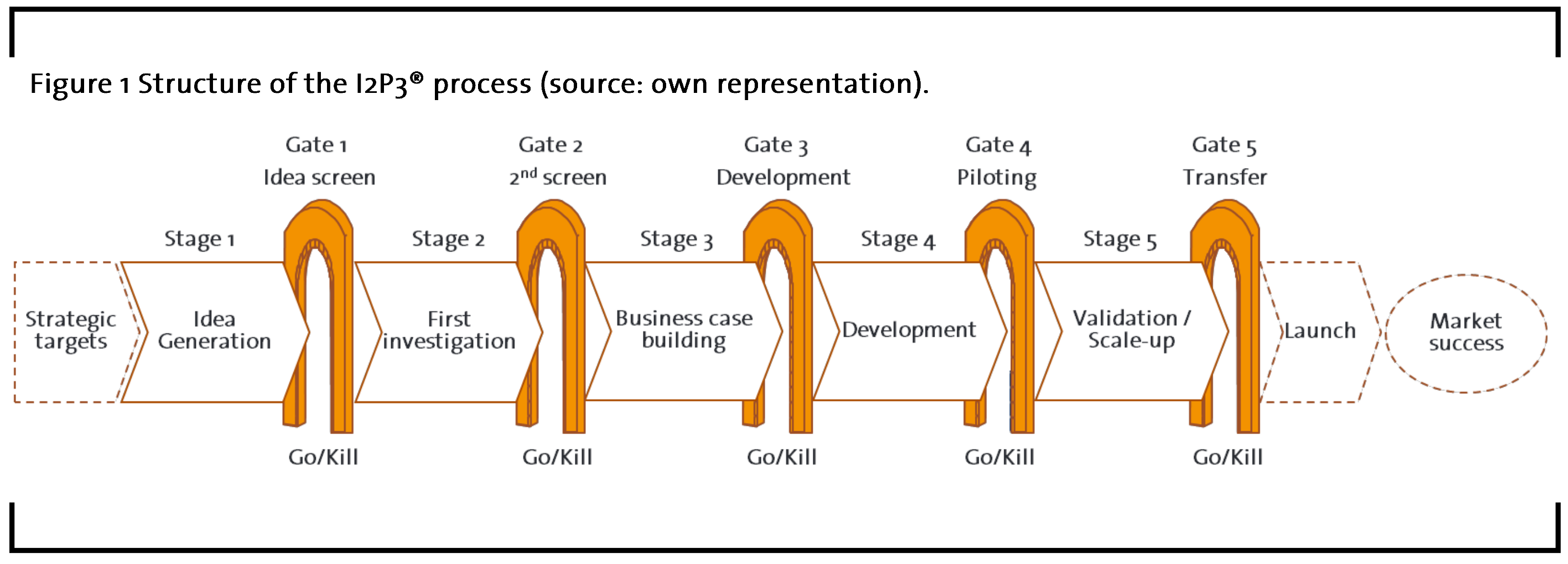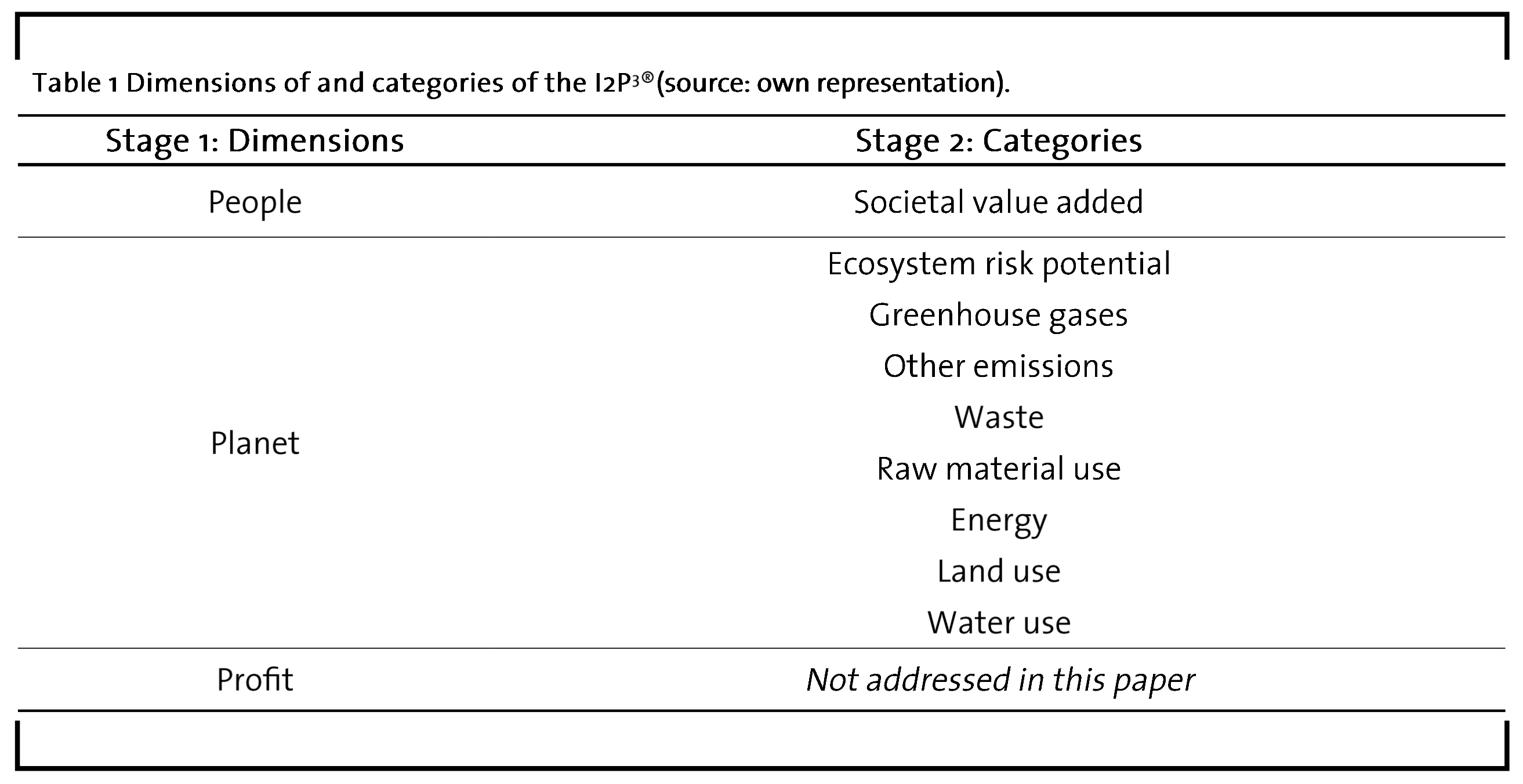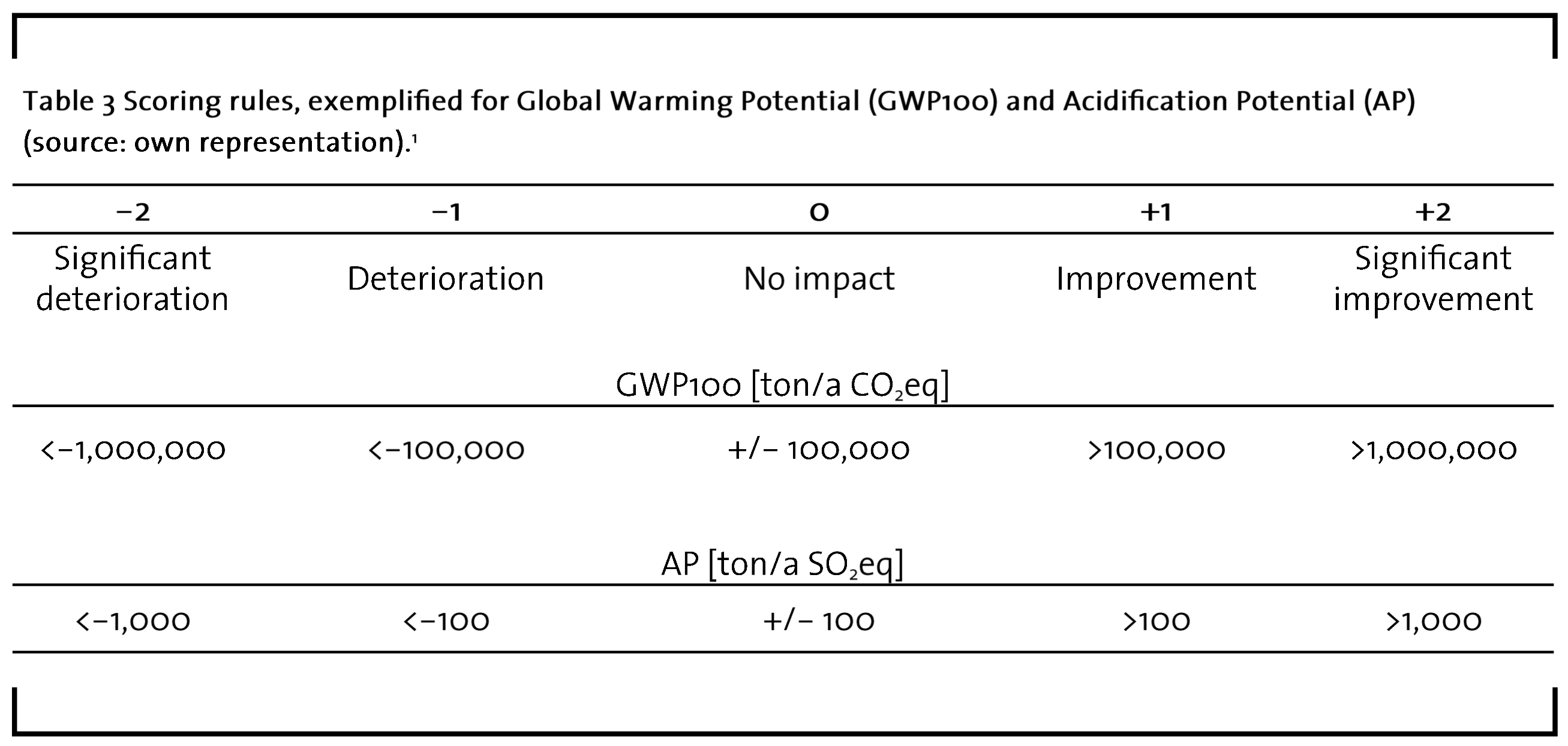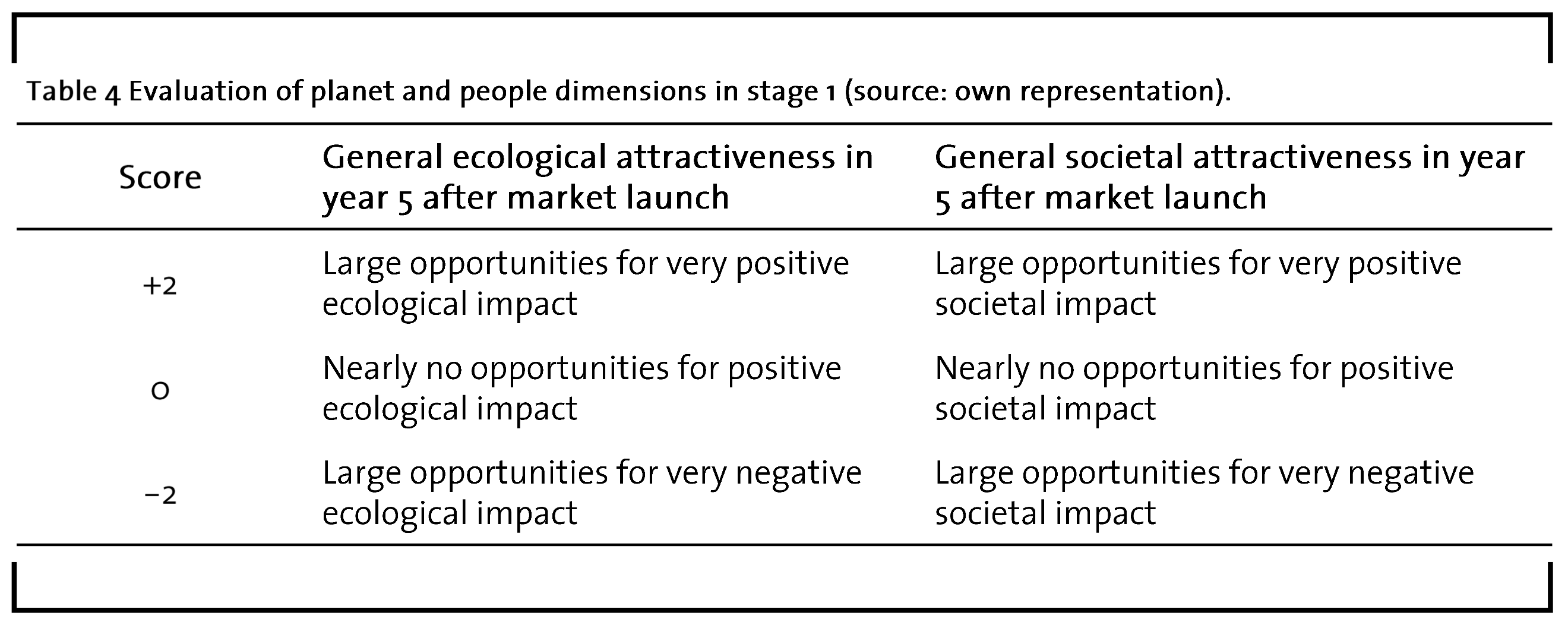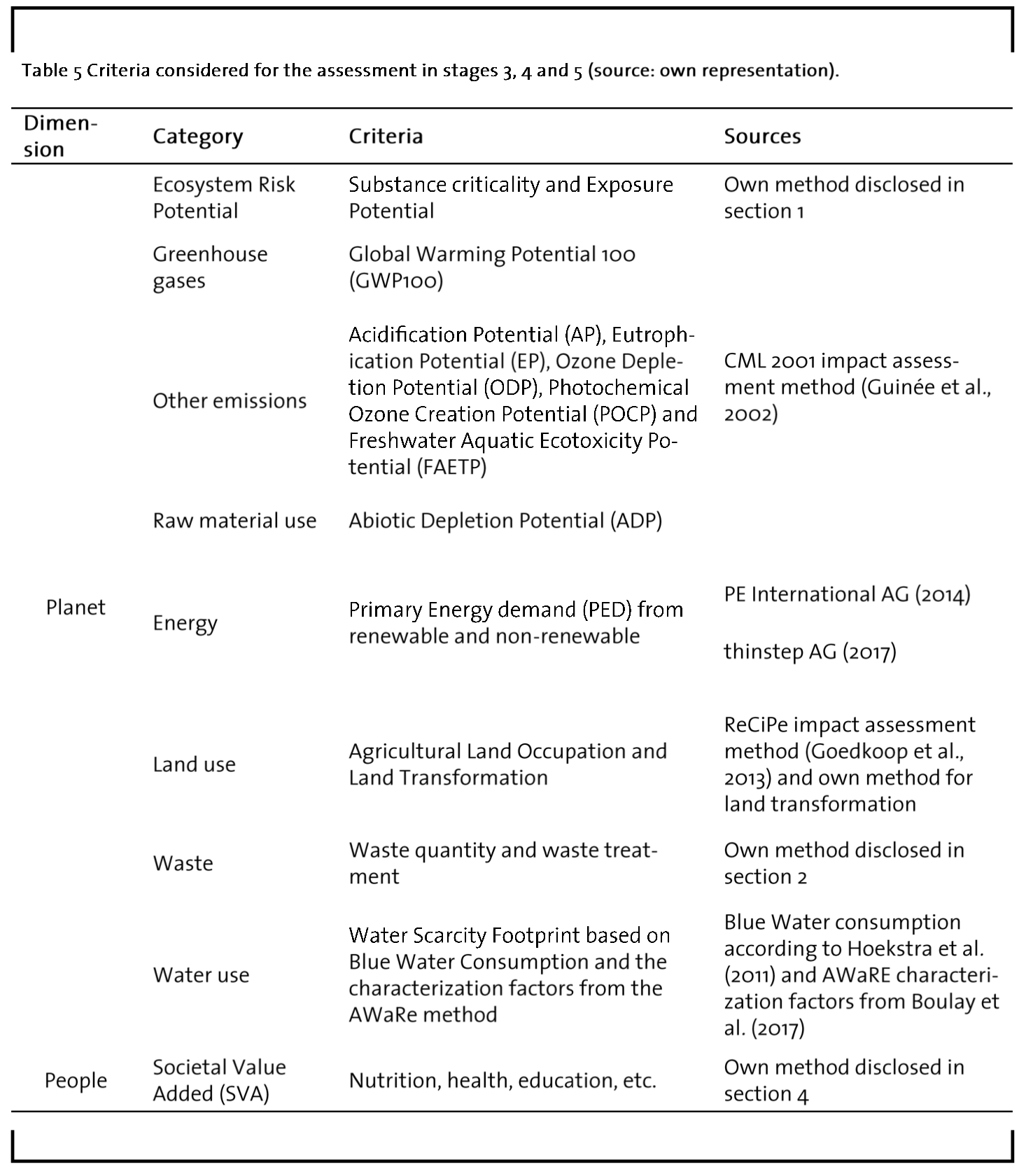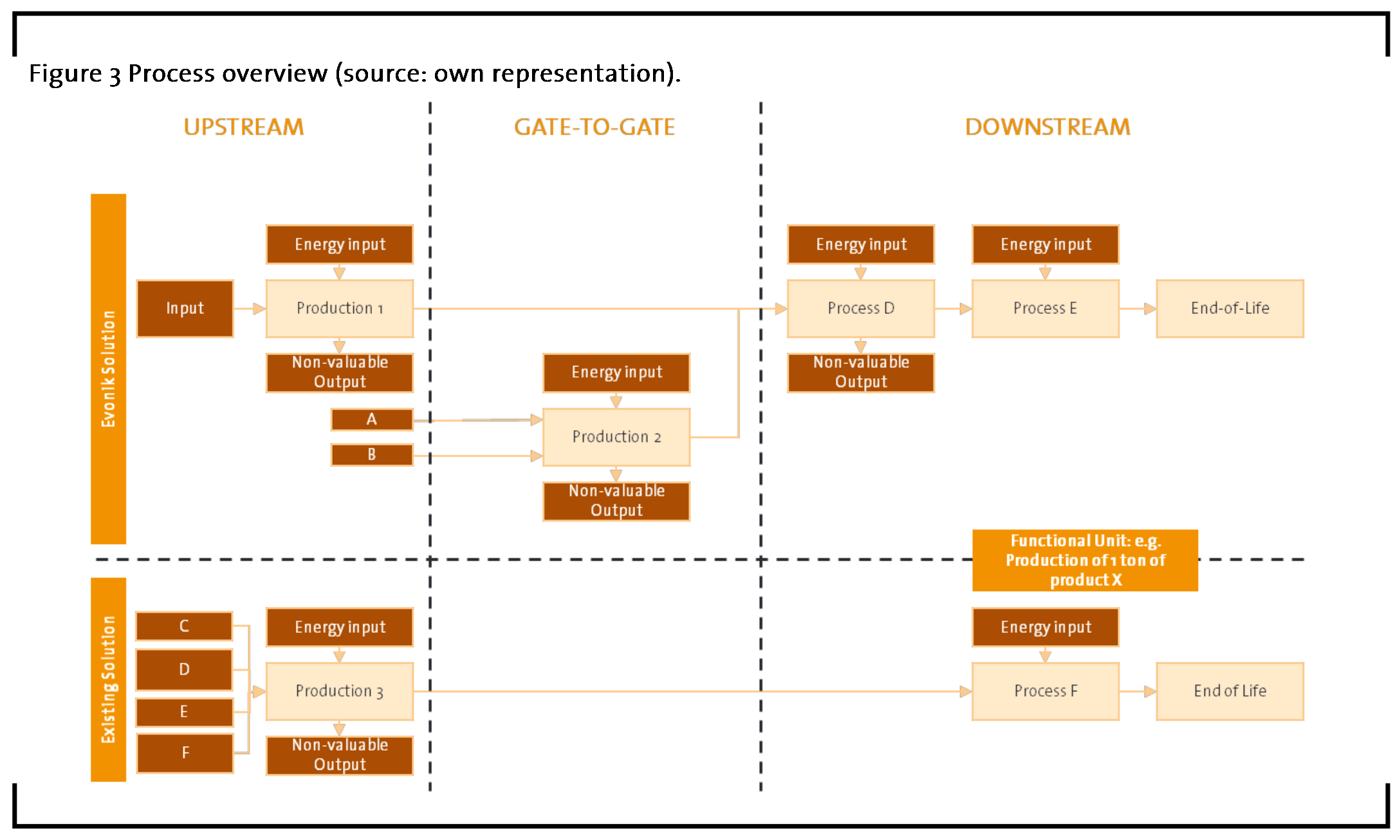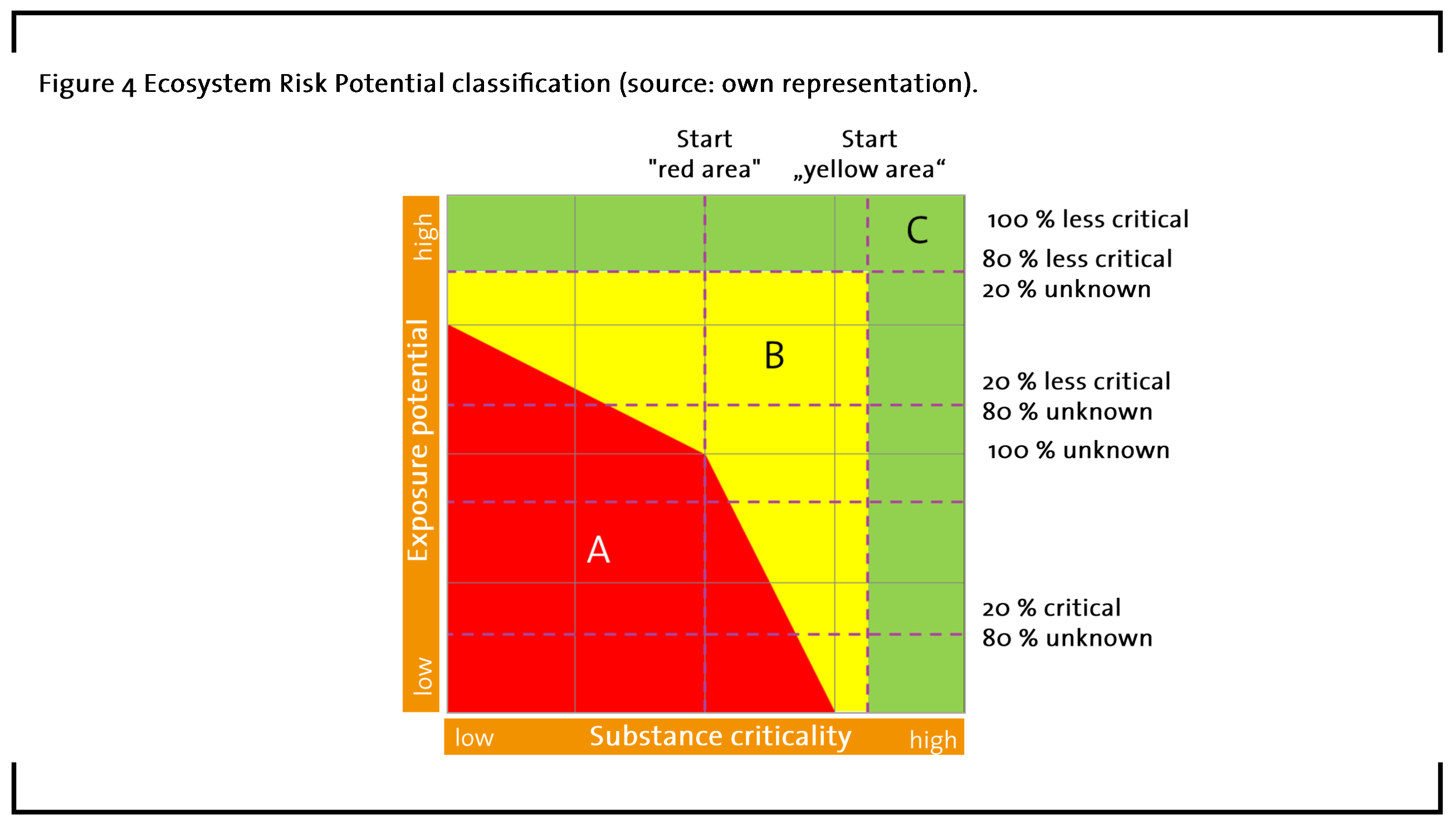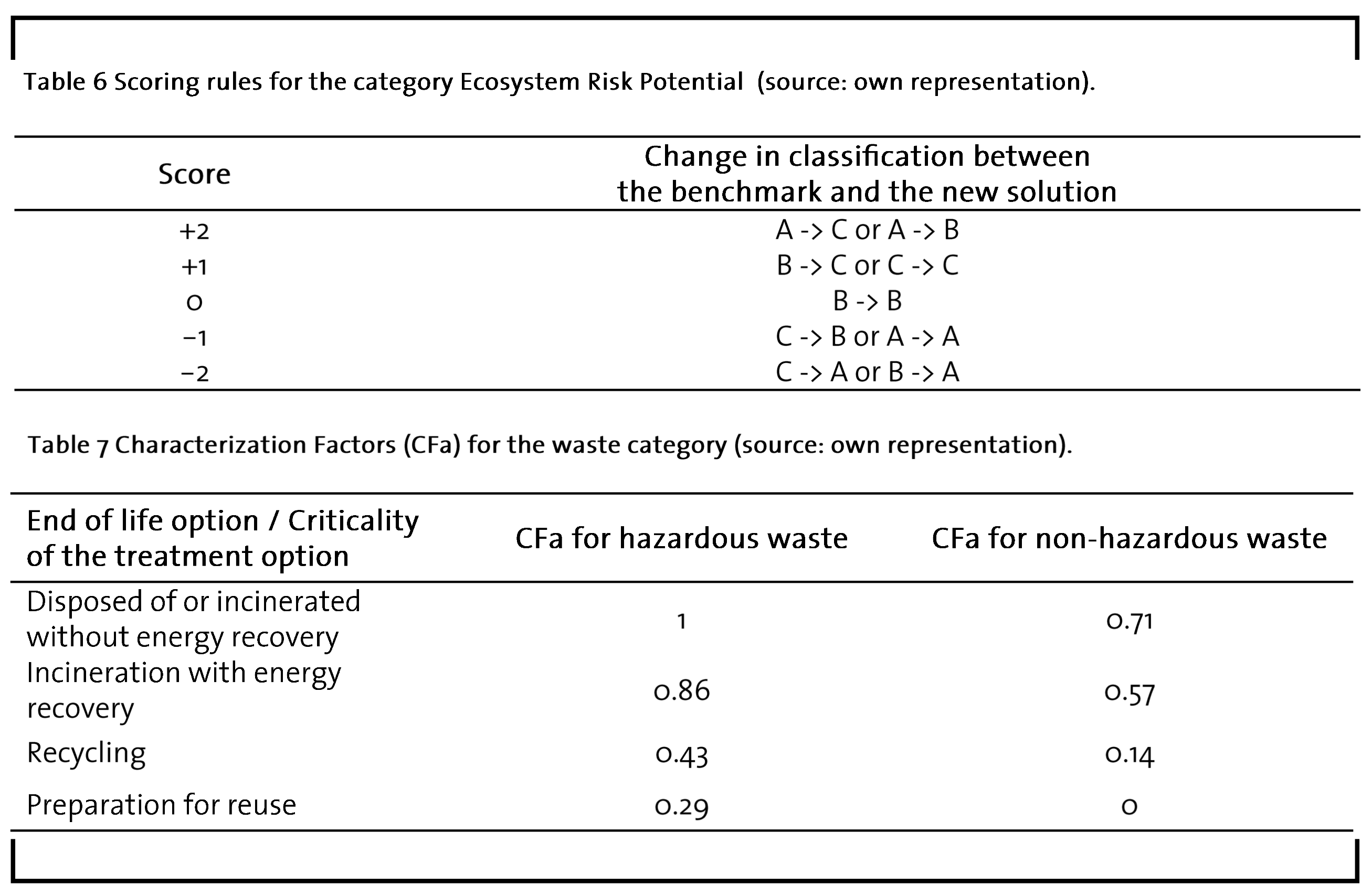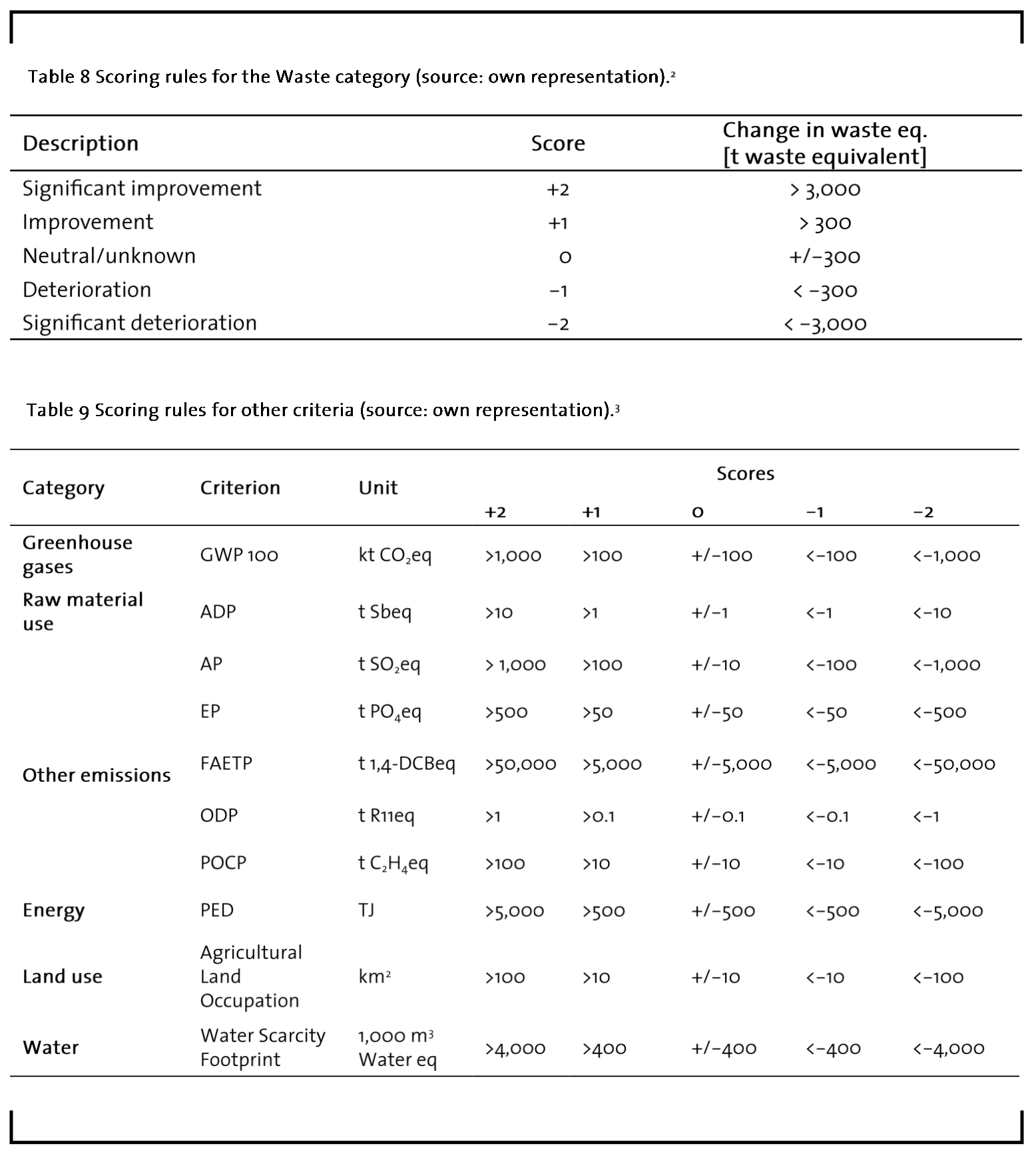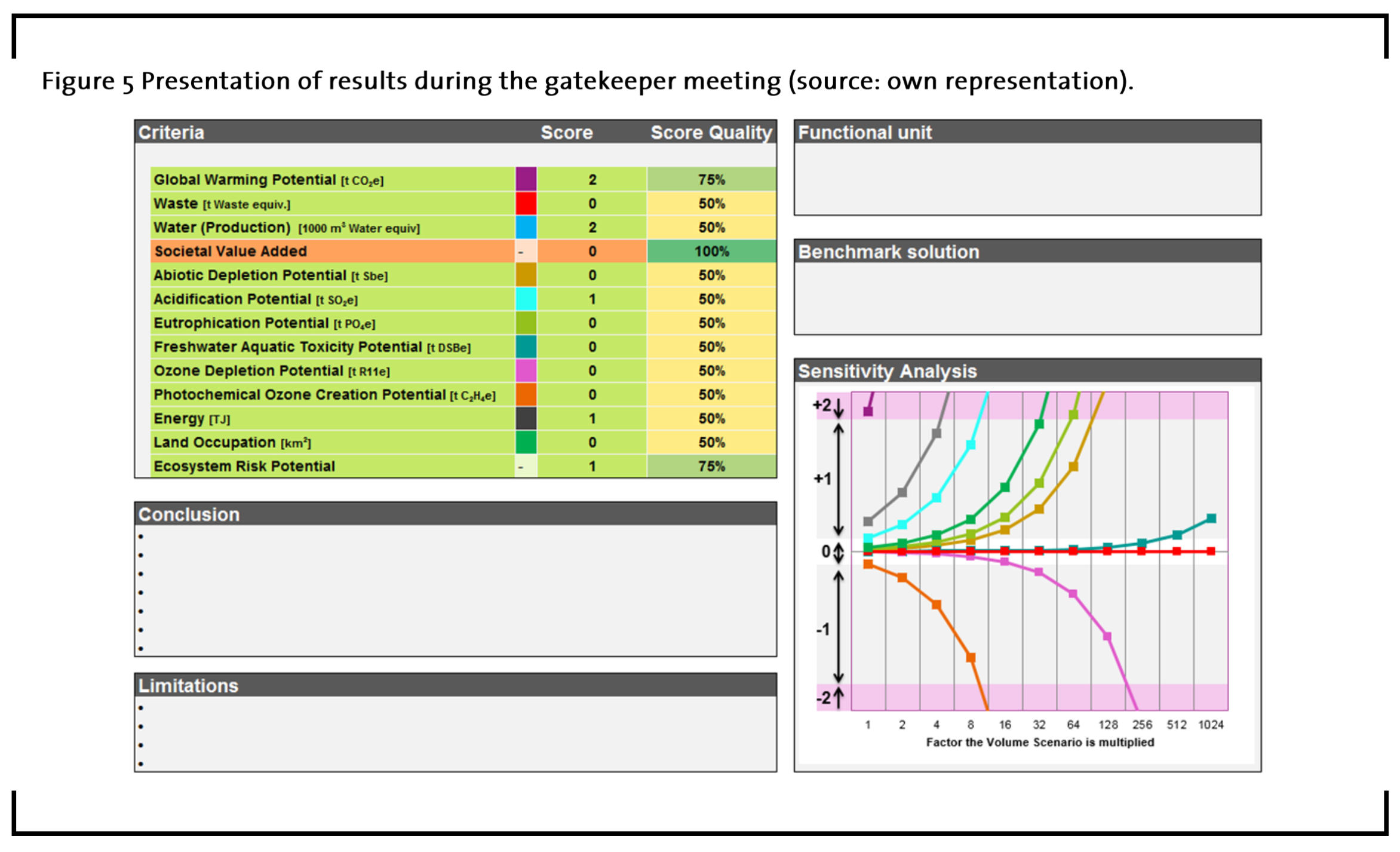Implementation of sustainability in Innovation Management: The Idea to People, Planet and Profit (I2P3®) Process
Abstract
Assessing the sustainability of the innovation portfolio is a particular challenge for industries. The two main issues are the lack of data at the early stage of project development and the high number of ideas and projects that are developed. This paper provides an overview of the I2P3® process (Idea to People, Planet and Profit®) which was developed by Evonik Creavis GmbH, the strategic innovation unit of Evonik Industries AG, in order to integrate sustainability into its innovation process. This process is based on a holistic approach to assess the three dimensions of sustainability (economical, environmental, and societal). The paper includes a detailed description of each stage of the process, with the categories and criteria used to assess these three dimensions, from idea generation to market launch. Following this, difficulties faced in the implementation process and improvement options are discussed.
1 Introduction
There is widespread agreement on the claim that an enterprise can survive and prosper in the long run only if it is able to innovate every now and then (Drucker, 2014). Innovation is the key to a company’s long-term success. New product offerings, process improvements, new market applications, or business models are the drivers for future cash flows.
Hence, every innovative company needs to ask itself two crucial questions: How do we find the right innovations? How do we innovate the right way? A trend that can be observed in many industries is a shift towards environmentally or societally benign and hence “sustainable” solutions. There is abundant evidence that companies offering solutions that are more sustainable than competing offerings also perform financially better, for example, in terms of share price development or product lifespan (Nidumulou et al., 2009; Hart and Dowell, 2011; Pogutz and Winn, 2013; Shrivastava and Kennelly, 2013). Reasons for this are – among others – environmental and societal pressure groups, responsible investors, environmental scandals, informed and responsible customers, and legislative activity.
The latter becomes particularly visible in the United Nations (UN) Sustainable Development Goals (SDGs) (United Nations (UN), 2016). These goals were adopted by 193 countries during the 2015 UN General Assembly.
Therefore, many companies need to somehow systematically combine economy, ecology, and societal impact in their ideation and innovation processes. A pivotal role is played by the specialty chemical industry, as their products often have an important influence on the innovation processes of other industrial sectors, such as the food, textile, automotive, and electrical industries.
The following is a brief description of the involved parties. Evonik Industries AG (short: Evonik) is one of the world leaders in specialty chemicals. The focus on high-margin specialty businesses, customer-orientated innovative processes, and a trustful and performance-oriented corporate culture form the heart of Evonik corporate strategy. Evonik Creavis GmbH (short: Creavis) is the strategic innovation unit of EVONIK, focusing on medium to long-term innovation projects that support growth and the sustainability strategy of EVONIK and open up new business options. CREAVIS carries out research into transformative innovations while taking economic, ecological, and societal aspects into account in its portfolio management. With respect to the assessment of ecological and societal aspects, Creavis works closely with the Evonik internal Life Cycle Management (LCM) team, which acts as a competence center for Life Cycle Assessments (LCA) and sustainability related topics.
1.1 Problems and Challenges
The commitment of Creavis to focus on sustainable innovation poses the challenge to predominantly develop new offerings that are profitable, environmentally benign, and beneficial for society. This means that the 3 dimensions of sustainability need to be addressed at some point during the innovation process. But what is the right time to consider the effects of an innovation on society (i.e. on the people dimension) and on the environment (i.e. on the planet dimension)? At which maturity stage should sustainability issues be taken into account? From our perspective, the answer is: as early as possible. The earlier any environmental or societal effects are evaluated, the easier it is to take countermeasures if the effects turn out to be negative or – in the positive case – the easier it is to translate such effects into a compelling value proposition (Bednarz et al., 2017).
However, this “as early as possible” statement creates two challenges. First, uncertainties at the early stage of innovation make any assessment extremely challenging. Then the practicability due to the high amount of innovative ideas that are being developed at Creavis.
There is abundant literature on structured appraisal of ideas and fruitful innovation processes but so far only a few publications have addressed approaches and indicators for sustainable development (e.g. Kralisch et al. (2018), Stock et al. (2017)). For the chemical industry in particular, some initial approaches have been developed, which address a sustainability assessment for their innovation (VCI, 2017). To the best of our knowledge, none of these approaches has been adopted by any other but the originators’ company. This is mainly due to insufficient disclosure of the respective method and because at least one of the challenges mentioned above had not been sufficiently resolved.
1.2 Aim of this paper
In this paper, we introduce and fully disclose the I2P3® (Idea to People, Planet and Profit®) process, which was developed by Creavis to incorporate sustainability into the DNA of the innovation process while overcoming the two challenges of uncertainty and practicability.
With this process, effective management and control of sustainable innovations within a company is possible. This process was introduced in 2013 and has been successfully implemented in the innovation landscape of Creavis. In the further course of this article, a detailed description of the I2P3® process is provided with the assessment method in each stage of the process. This is followed by a discussion about possible improvements to the process and its further development.
2 I2P3® Process
2.1 Structure of the I2P3® Process
In general, I2P3® is a management process that starts with idea generation and ends with the market launch of the innovation. Within this process, impacts of the idea/project on all three dimensions of sustainability are taken into account: People (societal aspects), Planet (ecological aspects) and Profit (economic aspects). Like Cooper’s Stage-Gate® model (Cooper et al., 2002), the I2P3® process comprises six stages (see Figure 1).
A stage is a phase during which a cross-functional and/or cross-regional team works on the realization of stage-specific deliverables. For a sound decision, a set of categories and criteria for all the three dimensions of sustainability is assessed by the respective project manager and discussed during the gatekeeper meeting.
The nomenclature of the I2P3® process is shown in Table 1. Dimensions are the highest level of aggregation for the analysis; they represent the three dimensions of sustainability. Within each dimension, categories have been selected to describe as holistically as possible the landscape of each dimension. Finally, criteria have been defined to further specify each category (e.g. Global Warming Potential using a 100-year timeframe within the category “Greenhouse gases” or Acidification Potential as one criterion within the category “Other emissions”).
During stages 1 and 2, the assessment is carried out qualitatively on the dimension and category levels. From stage 3, a quantitative assessment is performed at the criterion level. The full set of criteria is described in the section 2.3.3. The goal is to increase both quality and validity of the assessment throughout the stage-gate process. All assessments provide scores between −2 and +2 in comparison to a benchmark, which makes the assessment a comparative one (Table 2). The benchmark represents the most established technology on the market at the (future) time of market entry, in other words, the direct competitive product on the market (more details in section 2.2).
First, this allows qualitative analyses to be semi-quantified in stages where knowledge about the development and therefore the data quality for a quantitative analysis is poor. Second, it enables the effects of a project on different criteria to be compared. This comparability was shown to be a major issue within the establishment of the I2P3® process: What if a particular innovation project promises to yield a fantastic net present value (NPV) within the profit dimension and, in addition to that, saves 200,000 tons of CO2 equivalents per year but at the same time causes 100 tons of additional SO2 emissions?
Therefore, a set of scoring rules for each criterion was derived and classified within the scale [−2; +2], allowing a translation of different numbers and units into one consistent assessment scheme (Table 3).These criteria allow the performance of the innovation idea/project to be (semi-) quantified in each stage of its development. Each project is expected to yield a significant improvement (i.e. +2) in at least one of the three dimensions. If a project shows a significant deterioration in one category (score = −2), it should usually not be continued. However, despite a score of −2 in a certain category, a project may still be pursued (e.g. if the project manager provides a credible idea on how to improve that category while exhibiting a significant improvement for any other category). To express the quality of the assessment of each criterion, a score between 0% and 100% is assigned to each of them. This is selected according to the data availability and quality at the time of the assessment.
1 Ranges might be modified according to current innovation portfolio and company’s targets. The ranges presented in this publication are the ones used at the time of the study (2018).
Nevertheless, the problem of defining the right scoring rules remains. Unfortunately, scientific literature does not provide any guidance or methods on how to classify such effects in a comparable manner. For example, the question “what amount of avoided acidification potential needs to be reached in order to deserve the label ‘significant’?” has not yet been answered. In order to set ambitious but realistic scoring rules, Creavis analyzed its current innovation project portfolio at that time and determined the top 5% of projects for each sustainability criterion. The threshold for a +2 score for each criterion was then set right below this group of top performers. A score of +1 is awarded if 10% of the threshold for a score of +2 is reached. The same applies for negative scoring rules, which have the same absolute values as the positive ones but the opposite sign (see Table 3).
This approach allows for regular and transparent sustainability reporting of the Creavis innovation pipeline as well as simple target setting on a portfolio level (e.g. “next year x additional +2 projects and no more –2”). Since the initial introduction of I2P3®, some categories have undergone slight alterations – mostly due to scientific progress. For instance, in 2016, it was decided to apply AWaRe characterization factors (Boulay et al., 2017) instead of water stress indices (Pfister et al., 2009).
Special attention is paid to describing the People and Planet dimensions because they represent the specificities of the I2P3® process. The assessment of the different categories and criteria from the People and Planet dimensions is conducted by in-house Life Cycle Management (LCM) experts with the support of the manager in charge of the innovative idea. This activity is called SusCHEQ and is explained in more detail in Section 2.2. An assessment of the profit dimension is not part of this paper.
2.2 SusCHEQ in practice
The assessment of the sustainability performance of innovation ideas or projects is called ‘SusCHEQ’ (Sustainability performance of innovation ideas and projects by means of a Comparative and Holistic Evaluation that is based on Quantitative and Qualitative data). To conduct a SusCHEQ in the most efficient way, a workflow is defined that consists of four steps (Figure 2).
SusCHEQ Introduction: This first step aims to produce a common understanding of the SusCHEQ methodology and to answer some general questions about the I2P3® process. Generally, this step is carried out only if it is the project manager’s first SusCHEQ.
SusCHEQ Execution: The second step, “Execution”, is the heart of the SusCHEQ. First, the project manager presents his/her idea or project to an LCM expert with all the relevant technical aspects (application, markets, expected benefits). Following this, the goal and scope of the analysis are defined together with system boundaries and a functional unit is selected. Choosing the benchmark is also an important aspect in this stage. The SusCHEQ is a comparative approach. This means that impacts on the People and Planet dimensions are assessed for the new idea or project (also called ‘New Solution’) in comparison to a benchmark (also called ‘Existing Solution’), which is the most established technology on the market at the time of market entry (direct competitive product on the market). The choice of the benchmark may be a particular challenge, for example, for an entirely new offering that creates a completely new market (e.g. printable batteries). Sometimes, more than one benchmark, representing several possible applications for the new product, may be considered in the business case. Benchmark selection should be supported by a proper market study that each project manager carries out for the assessment in the profit dimension. This benchmark solution is usually the product that the future Evonik product will compete with most fiercely. We deliberately decided to select the benchmark in this manner rather than choosing a possibly better-than-standard solution if this solution is used only in niche applications and hence is not the main competition for our product.
During the execution step, a specific set of categories and criteria, described in Section 2.3, is assessed in relation to the stage of the project. The assessment level (dimension level, category level or criteria level, vide supra) and hence the detail level and time effort of the execution depends on the stage of the project.
At the end of the execution step, the LCM expert presents the results to the project manager, as well as the scores obtained in each category or for each criterion. Additionally, relevant conclusions (e.g. potential for optimization or aspects that could be used for further differentiation) are drawn and discussed.
LCM experts must check the completeness of the SusCHEQ (e.g. that all categories or criteria have been assessed, results have been documented, etc.), the consistency and transparency of data and results, and a valid interpretation has been made. When the execution is completed, a different LCM expert takes over for the inspection step.
SusCHEQ Inspection: The inspection is intended to ensure a certain level of quality by applying the principle of dual control. The inspector has to check the relevance of the SusCHEQ (e.g. benchmark selection), its completeness, consistency, transparency, use of conservative assumptions, as well as a valid interpretation. A checklist is available for the inspector in order to ensure a correct and reproducible process.
SusCHEQ Approval: Once the inspection is finished, the result needs to be approved by the project manager’s line manager. This supervisor also needs to check for relevance, completeness, and consistency of the SusCHEQ.
This complete 4-step process for the assessment of an innovation project’s effects on planet and people is carried out from I2P3® stage 3 onwards. For stages 1 and 2, a shorter and purely qualitative version is applied to deal with the uncertainty and practicability challenges mentioned above. These shorter versions are described in Sections 2.3.1 and 2.3.2.
2.3 Assessment of the People, Planet and Profit Dimensions
When a new idea for an innovative product is developed and has just been entered into stage 1 of the I2P3® process, in general, very little is known about it. Consequently, the quantitative assessment of some categories and criteria can be very challenging and the data quality will be poor. However, data availability usually increases during the process development so that the data quality also improves.
2.3.1 Stage 1 (Gate 1 assessment)
The initial point of the I2P3® innovation process is when a new idea for a new product or an improved process is created. The idea generator files his idea in the Creavis I2P3® database, which is followed by an initial qualitative assessment regarding the positive, neutral, or negative impact on the People and Planet dimensions. No differentiation into different categories takes place within this first, rough assessment. Nor is the evaluation team required to consult with LCM experts in this stage. In a sense, the only purpose of the assessment in this stage is to make sure the evaluation team pays attention to potential ecological or societal impacts of the idea. The evaluation of these two dimensions in stage 1 is shown in Table 4. At gate 1, the evaluation team also acts as gatekeeper. In the case of a positive gate decision, an investigator is chosen to carry out the stage 2 assessment described in the following section.
2.3.2 Stage 2 (Gate 2 assessment)
In stage 2, the assessment of the planet dimension takes place on a category level, i.e. one level of more details. The result of this assessment is also more refined than in stage 1 as it uses a 5-step Likert scale. Based on the information provided by the investigator, a score between −2 and +2 is attributed to the categories presented in Table 5. While the Planet dimension is further substantiated by eight categories, the People dimension only contains one category, which is called Societal Value Added (SVA). This category reflects the contribution of the idea to topics that are relevant for society, such as housing, health, nutrition, energy supply, communication, safety, water supply, and education.
The question asked in common for all of these categories is: do we expect a (significant) deterioration or a (significant) improvement in the respective category in comparison to the benchmark, taking the entire life cycle of the future product into account?
To answer that question for all categories, short researches (e.g. using LCA software, scientific articles, etc.) can be conducted or the investigator can consult with LCM experts in order to gain some insights into the potential environmental impacts of some raw materials or processes.
This assessment usually requires some minor effort (<1 day). For most ideas, in this stage, the project manager is still not able to provide quantitative data (i.e. mass or energy balances) for the production of the new product but is able to give some information about the most likely production route, raw materials and performance in the application (e.g. energy savings in the targeted market or longer lifetime). Based on this semi-quantitative information, system boundaries, functional unit and the benchmark according to ISO 14040 and 14040 standard requirements (ISO, 2006) can be defined.
This approach allows positive or negative impacts of the innovation idea to be identified without going too much into the details of a full LCA. The latter would be impossible in this stage, anyway, due to poor data availability and the high resource requirement for such an analysis.
Based on the assessment in all three dimensions, the gatekeepers decide whether the idea should advance to stage 3.
2.3.3 Stages 3, 4, and 5 (Gate 3, 4, and 5 assessment)
The assessment of People and Planet dimensions in stages 3 to 5 is conducted on the criteria level, i.e. a set of specific criteria is assessed for each category defined in Table 1. Consequently, the SusCHEQ requires more time and resources for both parts compared to the previous assessment. The same SusCHEQ method (in terms of criteria used) is used for these stages (3, 4 and 5) but the analysis is refined: the data quality increases together with the data availability.
Starting with stage 3, the assessment of the Planet dimension is similar to an LCA and meets the requirements in terms of life cycle perspective, functional unit, transparency, comprehensiveness, workflow, and data quality according to (ISO, 2006). Criteria used are, as far as possible, widely accepted LCA impact categories (i.e. current best practices). However, some criteria are not derived from typical LCA impact categories but have been selected due to their relevance for chemical industries. Consequently, we developed our own methodology within the scope of the I2P3® process development and had it reviewed by the Wuppertal Institute. The criteria considered for stages 3, 4 and 5 are described in Table 5.
Like for any LCA, system boundaries have to be identified and a model representing the different steps of the life cycle (process overview) has to be established both for the innovation project and for the benchmark (see Figure 3). Based on this process overview, the next step is to prepare a Life Cycle Inventory (LCI), in other words, mass and energy balances, in order to quantify all inputs and outputs of each process unit. It should be noted that the innovation project may still be years away from commercialization and hence the I2P3® process allows significantly more assumptions and uncertainties than a classic LCA.
Gathering data about the benchmark may be very challenging and often requires more effort. As far as possible, data from established LCA databases are used, supplemented by literature data.
From stage 3 onwards, the assessment is mostly quantitative. In order to quantify the overall impact of the innovative Evonik solution over the identified benchmark, the difference in, for example, GWP 100 per functional unit is multiplied by the volume scenario that represents the amount of sales expected in 10 years from today. Consequently, the project manager needs to estimate the volume of sales from stage 3 onwards.
Criteria used for assessing the People and Planet dimensions are described in the next sections, with the focus on the methodological approach and scoring system.
Ecosystem Risk Potential (ESRP)
Responsible care has been a paradigm for the chemical industry for more than 20 years and it has been implemented within I2P3® in order to avoid or safely manage hazardous chemicals (International Council of Chemical Associations (ICCA), 2014) even though ESRP is not a classic environmental impact category. ESRP is currently not included in LCA software. For this reason, the assessment is semi-quantitative and with limited system boundaries. All substances (inputs and outputs) mentioned in the process overview (Figure 3) have to be assessed regarding their ESRP. This assessment method has been developed based on the “Guide on sustainable chemicals” from the German Environmental Agency (Reihlen et al., 2016).
Substance Criticality
Substance criticality (= hazardousness) is assessed based on the material safety data sheets of the respective substances. A classification (red, yellow, green or white) is attributed to each substance according to its criticality, which corresponds to a specific value (see brackets):
- Red: Substance may cause severe health and/or environmental damage (8)
- Yellow: Substance may damage health and/or the environment (2)
- Green: Substance is not dangerous to human health or environment (0)
- White: Substance properties are unknown (6)
This assessment covers the criticality regarding explosion risk and human and environmental toxicity. An interim value is attributed that reflects properties of the most critical substance. This interim value is multiplied by a second value representing the risk of dispersion of the substance in order to obtain a final substance criticality. Substance risk of dispersion is also assessed based on the material safety data sheets of the respective substances (solubility, vapor pressures, etc.) and the following classification:
- Red: Substance has a high risk of dispersion (2)
- Yellow: Substance has a medium risk of dispersion (1,5)
- Green: Substance has a low risk of dispersion (1)
- White: Substance risk of dispersion is unknown (2)
Exposure Potential
Secondly, each substance’s exposure potential is assessed. A hazardous substance may be exposed to the environment (e.g. containment of installation, water emissions), to the workplace (e.g. processing at low or high temperature and pressure, safety management system for workers) and to customers (e.g. type of application, disposal). For each risk, a classification as “critical” or “less critical” can be made.
- A value of 1 is given to the classification as “less critical”, a value of 2 is given to “unknown” and a value of 3 is given to “critical”
- Finally, the average value is calculated for all the exposure potential
Substance Ecosystem Risk Potential
The ESRP is produced from the combination of substance criticality and exposure potential. The substance is either classified as Red (A = Highly critical), Yellow (B = critical) or Green (C = not critical) according to the matrix shown in Figure 4.
All substances involved in the innovative New Solution and in the benchmark Solution are assessed on the basis of this method, cradle-to-grave, as far as possible. Then the most critical substance is identified for either solution, which gives the final classifications (A, B, C).
As the assessment is comparative, the final score of the category ESRP is obtained by comparing the classifications of either solution. Table 6 describes the rules to be followed in order to assign the score to the category.
Waste category
The most important question when discussing waste is whether it is
- hazardous or
- non-hazardous
and what its disposal route is:
- Waste to dispose of,
- Waste to incinerate with or without energy recovery,
- Waste for recycling and
- Waste for reuse.
With the help of the LCA software GaBi (thinkstep AG, 2017), the quantity of waste generated per functional unit can be calculated (hazardous and non-hazardous going to disposal). If other wastes are disposed of by other routes, they have to be calculated manually according to the data available and based on the Life Cycle Inventory. The amount of waste is then multiplied by a characterization factor (CFa) that represents the criticality of the waste treatment (Table 7), whereby a CFa of 1 represents the worst waste treatment option and a CFa of 0 the best one. Within the classification, hazardous wastes have a higher CF than non-hazardous wastes within the same waste treatment option. The CFa values are based on the waste hierarchy developed in the German law on Closed Cycle Management and Waste (KrWG, 2012), as no scientifically substantiated CFa are available so far.
For the assessment, all waste streams occurring in both the Evonik solution as well as the benchmark solution are multiplied with the respective CFa, resulting in waste equivalents. Finally, the difference in waste equivalents between both solutions is multiplied by the production volume in 10 years from now in order to obtain the absolute impact and the score for the waste category (see Table 8).
Other criteria
All remaining criteria related to the categories greenhouse gases, other emissions, raw material use, agricultural land occupation, energy and water can be directly assessed with the GaBi software. Again, criteria are calculated for both the New Solution and the benchmark, and the difference is multiplied by the production volume in 10 years from now. The following scoring rules (see Table 9) are used to define a score between −2 and +2.
Societal Value Added (SVA)
Due to a lack of methodological approaches to assess societal aspects of sustainability quantitatively and due to the requirement of having a pragmatic approach within the scope of I2P3®, a qualitative approach was developed to cover this dimension. The goal was to focus on the societal value added, i.e. the societal benefits that the New Solution might have compared to the benchmark in its application. While the assessment of the societal value added remains the same from stage 2 onwards, the analysis becomes more detailed for the different criteria. The following societal value-added criteria have been selected, as they are particularly relevant for Evonik business:
- Nutrition: malnutrition, hunger, obesity, etc.
- Health: life expectancy, human diseases, infant mortality rate, etc.
- Education: access to education, graduation rate, etc.
- Energy supply: access to energy, security of supply, etc.
- Housing: living conditions, etc.
- Mobility: transport infrastructure, access to mobility, etc.
- Water supply: access to clean drinking water, etc.
- Communication: access to communication systems, etc.
- Safety: safety and security conditions, protection against natural catastrophes, etc.
These criteria are mainly derived from Schaltegger et al. (2007), Schmidt et al. (2004), UBA (2016) and UNDP (2016).
Due to the subjectivity of this assessment, it is hard to distinguish between “significant improvement” and “improvement”. Therefore, only scores of +2, 0 and −2 are attributed. The project manager and LCM expert discuss the range of criteria and prepare a detailed documentation of the expected impact.
2.3.4 Communication and presentation of results at the gatekeeper meeting
SusCHEQ results are presented in a decision meeting (gatekeeper meeting). No weighting is applied between criteria from a category and between categories from a specific dimension. In fact, all criteria are presented as stand-alone criteria without giving more or less importance to any of them. In order to present the results clearly, pragmatically, and transparently, a chart (Figure 5) is used to present the results for the individual criteria. A graphic is also provided showing the scores obtained if the volume scenario were to be increased.
3 Discussion and Outlook
I2P3® is the innovation process of Creavis. It has, to date, not been used extensively in the innovation processes of other Evonik departments. Therefore, not all innovations of Evonik are yet assessed on the basis of the I2P3® process.
Several improvement possibilities have already been identified to make I2P3® more efficient and holistic. First of all, due to recent improvements in assessing societal aspects of sustainability, the category SVA might be revised in the coming years. A first improvement could be to consider societal aspects in the full life cycle and regard impacts on different stakeholder groups, as recommended by the UNEP SETAC (workers, local community, society and consumer) (UNEP/SETAC, 2009). For each stakeholder group, a qualitative assessment could be performed for a set of criteria as described by the Roundtable for Product Social Metrics (Fontes, 2016) and WBCSD (WBCSD, 2016). This quantitative approach would be a first step to improve the assessment of societal aspects within I2P3®.
The assessment of biodiversity and aspects related to the impact of land transformation is currently a bottleneck in LCAs. When the I2P3® process was developed, a qualitative method was implemented in order to include land transformation due to its high relevance, especially for bio-based chemicals. However, implementing I2P3® and conducting SusCHEQs showed that this method is currently not practicable and needs to be revised (qualitative assessment too generic to lead to any meaningful conclusions). Within the scope of optimizing I2P3®, a new method was proposed in order to include quantitative impacts from land occupation and transformation. A set of criteria has been chosen based on the LANCA impact assessment method (Bos et al., 2016) and is currently being tested in some projects. Aspects such as biotic production, erosion resistance, groundwater replenishment and mechanical filtration will be included in the assessment.
Due to the high number of ideas and projects that have to be assessed (the number of SusCHEQs carried out so far is in the three-digit range), the method needs to be pragmatic. An important aspect is the integration of the I2P3® criteria in LCA software. For example, the integration of societal criteria would accelerate the successful implementation of a quantitative assessment of the People dimension. The integration of an Ecosystem Risk Potential assessment method in LCA software would also increase the quality of the assessment: in the current method, the assessment of the substances used upstream is very limited due to data availability (i.e. knowledge of the substances used upstream).
The I2P3® process is currently based on the consideration of absolute improvements in the Planet and People dimensions, as it is the intention to provide significant benefits for environment and society which relative approaches might not provide. The consequence is that, compared to bulk chemicals, specialty chemical projects with a low expected production volume often result in a score of 0 in various categories and criteria, even if they result in a high relative improvement compared to the selected benchmark. Thus, adding relative data to the absolute data might assist the decision-making process.
Moreover, an important improvement of the current I2P3® process would be achieved if an approach or recommendations were to be developed in the scientific community to define absolute scoring rules (i.e. what is a significant improvement e.g. for greenhouse gases emissions?). The I2P3® process could easily be adapted to these new scoring rules.
Last but not least, the large number of criteria assessed within the I2P3® process and the associated complexity raised questions regarding whether it would not be more valuable to reduce the number of criteria and instead focus on the criteria that are considered relevant for the respective innovation project. In consequence, this means that for each innovation project an analysis regarding relevant sustainability criteria along the whole value chain needs to be performed first. This step requires a good understanding of the sustainability requirements of the customers and the market. By doing so, some positive side effects might occur:
- Methodological connectivity to recent developments with regard to product portfolio assessment is ensured (WBCSD, 2018). This aspect is very important, as innovation projects might eventually become part of the product portfolio in the future.
- Improved customer communication, as the focus is on sustainability-related topics that matter.
However, in order to avoid greenwashing, it is very important, that criteria that are not identified as being relevant for the respective innovation project do not lead to a significant deterioration.
References
Bednarz A., Beier J., Grünenwald T., Himmelreich B., Hundt B., Jäger F., Kirchner M., Krinke S., Letinois U., Merz C., Mohr L., Morris D., Otte N., Rebitzer G., Saling P., Schenker U., Schowanek D., Vollmer G., von der Assen, N., Wathelet A. (2017): Life cycle management in industry – supporting business with life cycle based assessments. LCM conference book(in review).
Bos U., Horn R., Beck T., Lindner JP., Fischer M. (2016): LANCA® – Characterization Factors for Life Cycle Impact Assessment. Version 2.0. Frauenhofer Verlag: Stuttgart.
Boulay A., Bare J., Benini L., Berger M., Lathuillère MJ., Manzardo A., Margni M., Motoshita M., Núnez M., Pastor AV., Ridoutt B., Oki T., Worbe S., Pfister S. (2017): TheWULCA consensus characterization model for water scarcity footprints: assessing impacts of water consumption based on available water remaining (AWARE), International Journal of Life Cycle Assessment.
Cooper RG., Edgett SJ., Kleinschmidt EJ. (2002): new Product Development Best Practices Study: What distinguishes top performers. APQC (America Productivity & Quality Center): Houston.
Drucker PF. (2014): The essential Drucker: The best of sixty years of Peter Drucker’s essential writings on management. 8th printing, Harper, New York.
Fontes J. (2016): Handbook for Product Social Impact Assessment.
Goedkoop M., Heijungs R., Huibregts M., De Schryver A., Struijs J., Zelm van R. (2013): ReCiPe 2008 A life cycle impact assessment method which comprises harmonised category indicators at the midpoint and the endpoint level: First edition (version 1.08) Report I: Characterisation, Den Haag.
Guinée G., Gorrée M., Heijungs R., Huppes G., Kleijn R., Koning de A., Oers van L., Segener Sleeswijk A., Suh S., Udo de Haes HA., Bruijn de H., Duin van R., Huijbregts MA. (2002): Handbook on life cycle assessment. Operational guide to the ISO standards: I: LCA in perspective. IIa: Guide IIb. Operational annex. III: Scientific background. Kluwer Academic Publisher: Dordrecht.
Hart SL., Dowell G. (2011): A Natural-Resource-Based View of the Firm: Fifteen Years After, Journal of Management 5 (5), pp. 1464–1479.
Hoekstra AY., Chapagain AK., Aldaya MM., Mekonnen MM. (2011): The Water Footprint Assessment Manual: Setting the Global Standard, London (UK).
International Council of Chemical Association (ICCA) (2014): Responsible Care® Global Charter, available at https://www.icca-chem.org/wp-content/uploads/2015/08/Responsible-Care-Global-Charter-Guide.pdf.
ISO (2006): Environmental Management – Life cycle assessment – requirements and guidelines.
Kralisch D., Ott D., Lapkin AA., Yaseneva P., De Soete W., Jones M., Minkov N., Finkbeiner M. (2018): The need for innovation management and decision guidance in sustainable process design, Journal of Cleaner Production 172, pp. 2374–2388.
KrWG (2012): Gesetz zur Förderung der Kreislaufwirtschaft und Sicherung der umweltverträglichen Bewirtschaftung von Abfällen (Kreislaufwirtschaftsgesetz – KrWG).
Nidumulou R., Prahalad C., Rangaswami M. (2009): Why Sustainability is now the Key Driver of Innovation, Harvard Business Review.
PE International AG (2014): Primary Energy Demand of Renewable Energy Carriers: Part 1: Definitions, accounting methods and their applications with a focus on electricity and heat from renewable energies.
Pfister S., Koehler A., Hellweg S. (2009): Assessing the Environmental Impacts of Freshwater Consumption in LCA, Environmental Science Technology 43 (11), pp. 4098–4104.
Pogutz S., Winn MI. (2013): Business, Ecosystem and Biodiversity – New Horizons for Management Research, Organization and Environment 2 (26), pp. 203–229.
Reihlen A., Bunke D., Gruhlke A., Groß R., Blum C. (2016): Leitfaden Nachhaltige Chemie: Eine Entscheidungshilfe für Stoffhersteller, Formulierer und Endanwender von Chemikalien: Dessau-Roßlau.
Schaltegger S., Herzig C., Kleiber O., Klinke T., Müller J. (2007): Nachhaltigkeitsmanagement in Unternehmen: Von der Idee zur Praxis: Managementansätze zur Umsetzung von Corporate Social Responsibility und Corporate Sustainability, CSM, Lüneburg.
Schmidt I., Meurer M., Saling P., Kicherer A., Reuter W., Gensch C. (2004): SEEbalance(R): Managing Sustainability of Products and Processes with the Socio-Eco-Efficiency Analysis by BASF.
Shrivastava P., Kennelly JJ. (2013): Sustainability and Place-Based Enterprise, Organization and Environment 1 (26), pp. 83–101.
Stock T., Obenaus M., Slaymaker A., Seliger G. (2017): A Model for the Development of Sustainable Innovations for the Early Phase of the Innovation Process, Procedia Manufacturing 8, pp. 215–222.
thinkstep AG (2017): GaBi 7: Software System and Databases for Life Cycle Engineering, Copyright,. thinkstep AG, Stuttgart Echterdingenen 1992-2017.
UBA (2016): Leitfaden Nachhaltige Chemikalien: Eine Entscheidungshilfe für Stoffhersteller, Formulierer und Endanwender von Chemikalien, Dessau-Roßlau.
UNDP (2016): Human Development Index (HDI).
UNEP/SETAC (2009): Guidelines for social life cycle assessment of products: Social and socio-economic LCA guidelines complementing environmental LCA and life cycle costing, contributing to the full assessment of goods and services within the context of sustainable development, UNEP, Paris.
United Nations (UN) (2016): Sustainable Development Goals, available at http://www.un.org/sustainabledevelopment/sustain
able-development-goals,
VCI (2017): Ansätze aus der Chemieindustrie für mehr Ressourceneffizienz im Innovationsmanagement: Tools für die Chemieindustrie und den Mittelstand.
WBCSD (2016): Social Life Cycle Metrics for Chemical Products, Geneva.
WBCSD (2018): Chemical Industry Methodology for Portfolio Sustainability Assessments (PSA).
